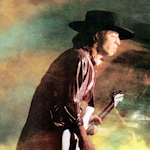"Love Hurts" was written by American songwriter Boudleaux Bryant. He initially composed the song in 1960, and it was first recorded by The Everly Brothers that same year. The Everly Brothers' version of the song, with their distinct harmonies, helped popularize it and established it as a classic. Roy Orbison also had some success with the song when he covered it in 1961. However, it was the cover version by the Scottish hard rock band Nazareth that achieved significant success and became their signature song.
Nazareth's rendition of "Love Hurts" was released as a single in 1974 and featured on their album "Hair of the Dog." The band's interpretation of the song transformed it into a power ballad with a heavier rock sound, differentiating it from the original version. The lead vocals were performed by Dan McCafferty, whose raspy and emotive voice added a unique depth and intensity to the song.
The Nazareth version of "Love Hurts" became a massive hit for the band, reaching high chart positions in various countries, including the United States, Canada, and the United Kingdom. It remains one of their most well-known and beloved songs.
The lyrics of "Love Hurts" explore the theme of love and its accompanying pain. The song expresses the anguish and heartache experienced when love goes wrong, highlighting the emotional struggles and conflicts that often accompany relationships. With its heartfelt and relatable lyrics, the song struck a chord with listeners and became an anthem for those dealing with the ups and downs of love.
Over the years, "Love Hurts" has been covered by numerous artists from different genres, further solidifying its status as a timeless classic. It has been performed by the likes of Cher, Jim Capaldi, Rod Stewart, and Gram Parsons, among others. Each artist brings their own interpretation to the song, showcasing its universal appeal and emotional resonance.
Nazareth's version of "Love Hurts" remains an enduring rock ballad that continues to captivate audiences with its raw emotion and powerful delivery. Its timeless message about the complexities of love has made it a beloved song for generations of music lovers.






